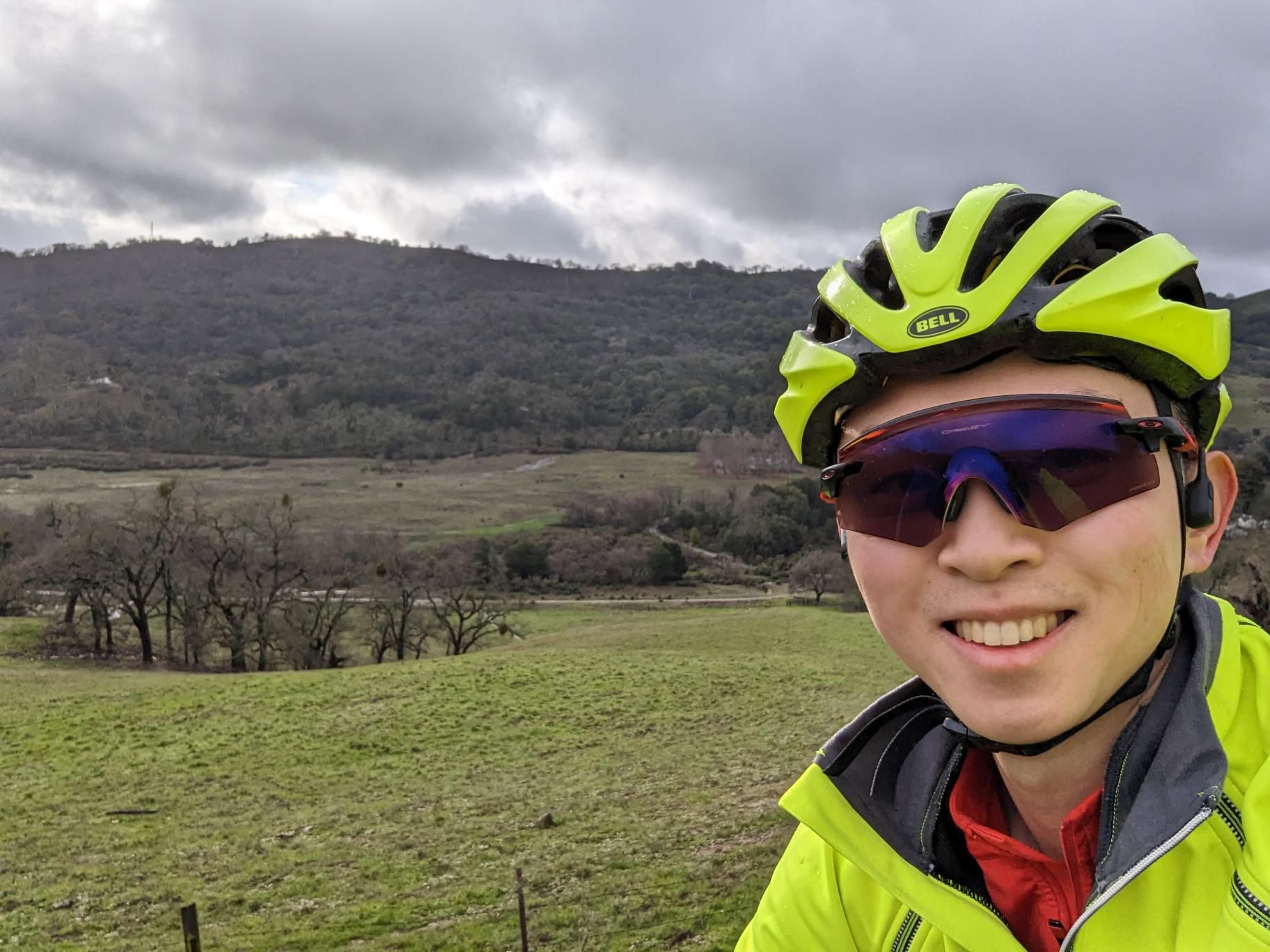Near death experience on Mt. Hamilton
I had a fairly late night the previous day. It was almost 8pm by the time I came home from dropping off my sister at Berkeley, and making a lovely winter melon tofu soup and sipping it took me past 10pm. A few hours of this and that and I didn’t get to bed until past 2am.
I woke up somewhere around 11am. I had originally had plans to climb Mt. Hamilton today, but fluctuated on it, because I knew sunset was at 5:15pm and I wanted to be down well before sunset. In the end, I decided to give it a try - I’d go as far as I was comfortable and Mt. Hamilton is close anyways. I could always go back. After all, this is how I did Mt. Evans two years ago - got up halfway the first time, and peaked the second time. I had a meal of two steamed buns and a cup of milk, and by the time I was packed and out the door, it was 12:20pm. I arrived at the bottom of Mt. Hamilton Road at 12:50pm and was on my bike by 12:58pm. It was about 55 degrees at the time. I was wearing some Pearl Izumo Pro bib shorts, a jersey, and an Louis Garneau jacket that I’d previously used at temperatures as low as 22 in Denver. I also used no-finger gloves, because the forecast said the peak would be 38 degrees. I had two 24oz bottles of room-temperature water and three Kirkland-branded granola bars. Sunglasses, Shokz, and I was on my way.
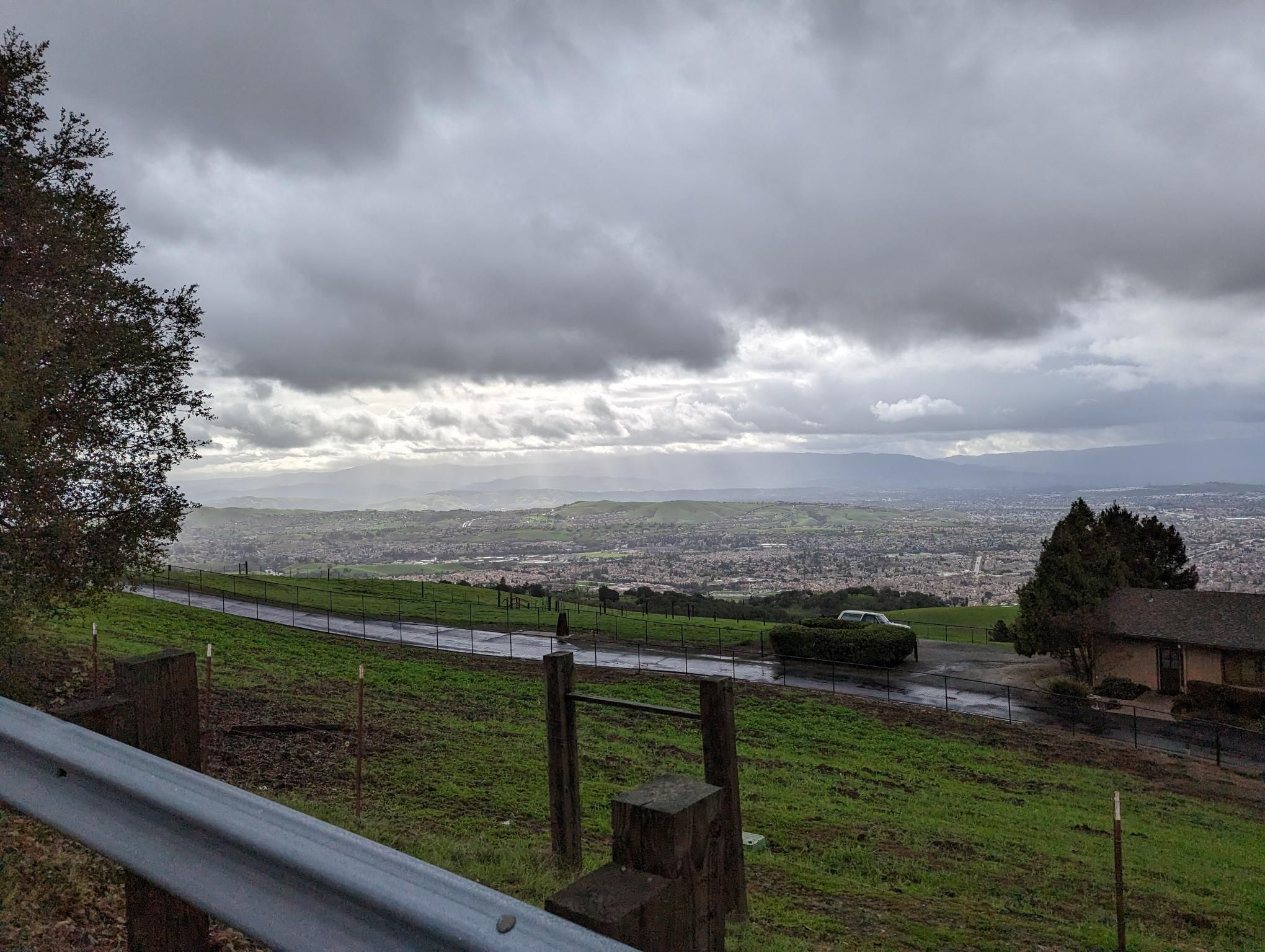
Not half a mile in, I saw a sign that stated, “Mt. Hamilton Road closed 8 miles ahead, at Grant Lake.” Well, that’s not good. I pulled out my phone and tried routing up to the peak and it indeed wasn’t taking me on Mt. Hamilton Road for the first half - it was taking me up Quimby Road. A few days earlier, when I was evaluating Mt. Hamilton as an option, I read up on the ride on bayarearides.com. I remember Quimby Road being named as an alternate, much more challenging option. I recall from some reading in the past that Mt. Hamilton Road was <6% in its entirety to accommodate stagecoaches from a century ago, but that Quimby Road was much much steeper, with segments over 13%. With no other options, I cycled back down to my car, and drove over to Quimby Road, parking near a high school. The delay meant that I was starting my ride at 1:25pm, which left me 3:50 until sunset. Probably not enough time to peak, but we’d see.
Quimby Road was just rampas inhumanas after rampas inhumanas. There were multiple segments well over 15% and it averaged over 10% for at least a 3 mile segment. The road was washed out in many places, and it felt like I was riding through muddy water littered with gravel half the time. I had recently restarted cardio training after a few months off, and I was suffering. Heart rate hovered around between 172 and 182 the entire time. And I physically could not get my cadence over 55 while sitting in the saddle. As I didn’t want a recurrence of plica syndrome, which for me had a trigger of low cadence in the saddle, I spent over half the time out of the saddle. There were also periodic rain showers coming down, which drenched my bibs, making it feel like I was sitting on a squid. The combination of having a squid as a saddle, the rampas inhumanas, and having to navigate the horrendous road resulted in a less-than-pleasant experience. But I was moderately pleased with my fitness and the sights were beautiful. All the cows were out in force to greet me.
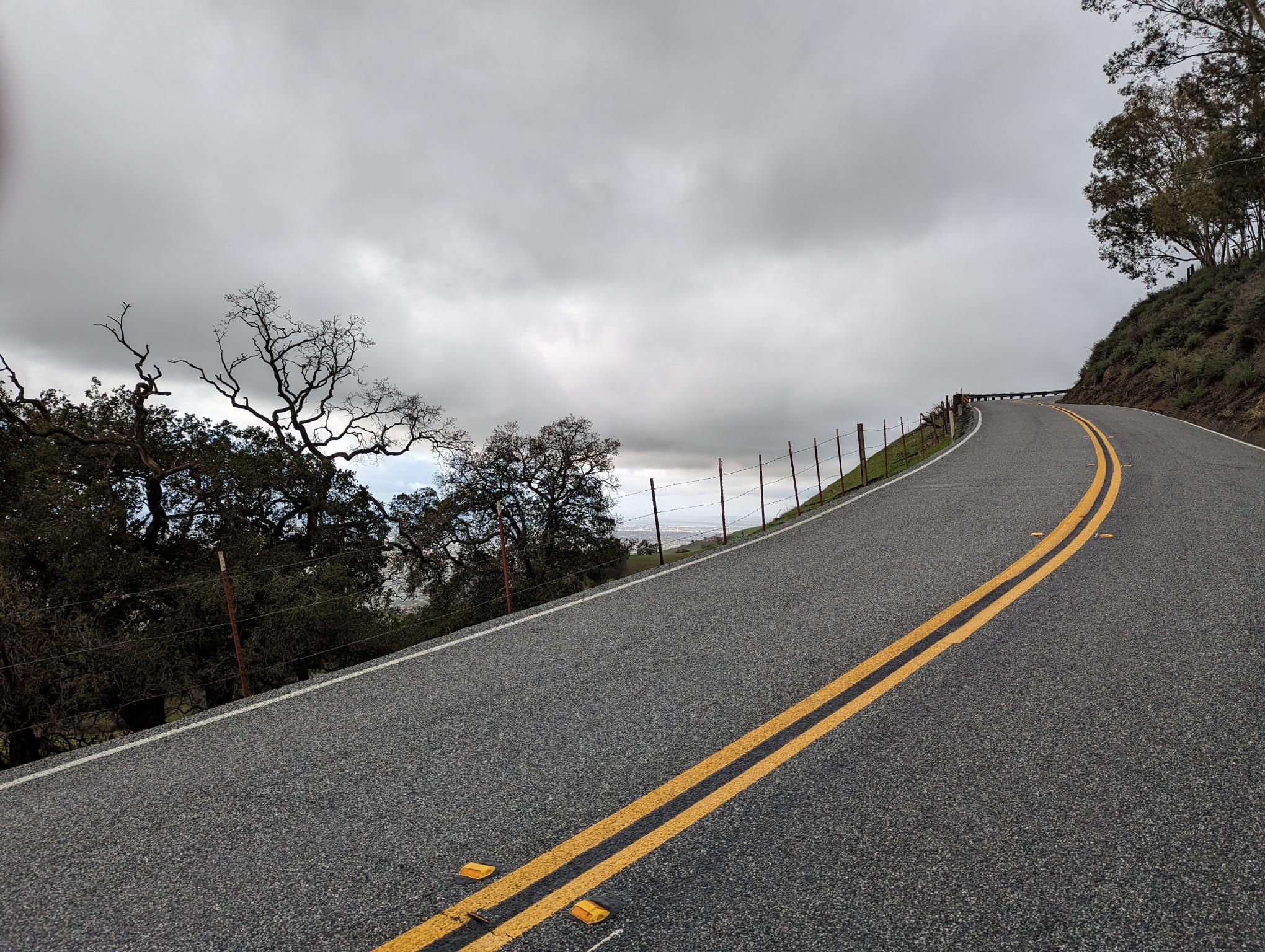
I had also read that the climb up to Mt. Hamilton wasn’t continuous - there were two short descents of less than a mile. I hit one of these as I topped out on Quimby Road, and within just a few minutes I was at the gate of the Joseph D. Grant County Park. There was a sign blocking the road up to the peak and I asked the park gate attendant, who said it was, “at your own risk, but not disallowed.” I saw that the next bit was meandering, relatively low gradient, so I decided to keep going. At this point, I was 5.4 miles into the ride, and the temperature had dropped to 45 degrees. The high point of Quimby Road was about 2150ft, but the short descent brought me back down to about 1550ft. And so, I set off again.
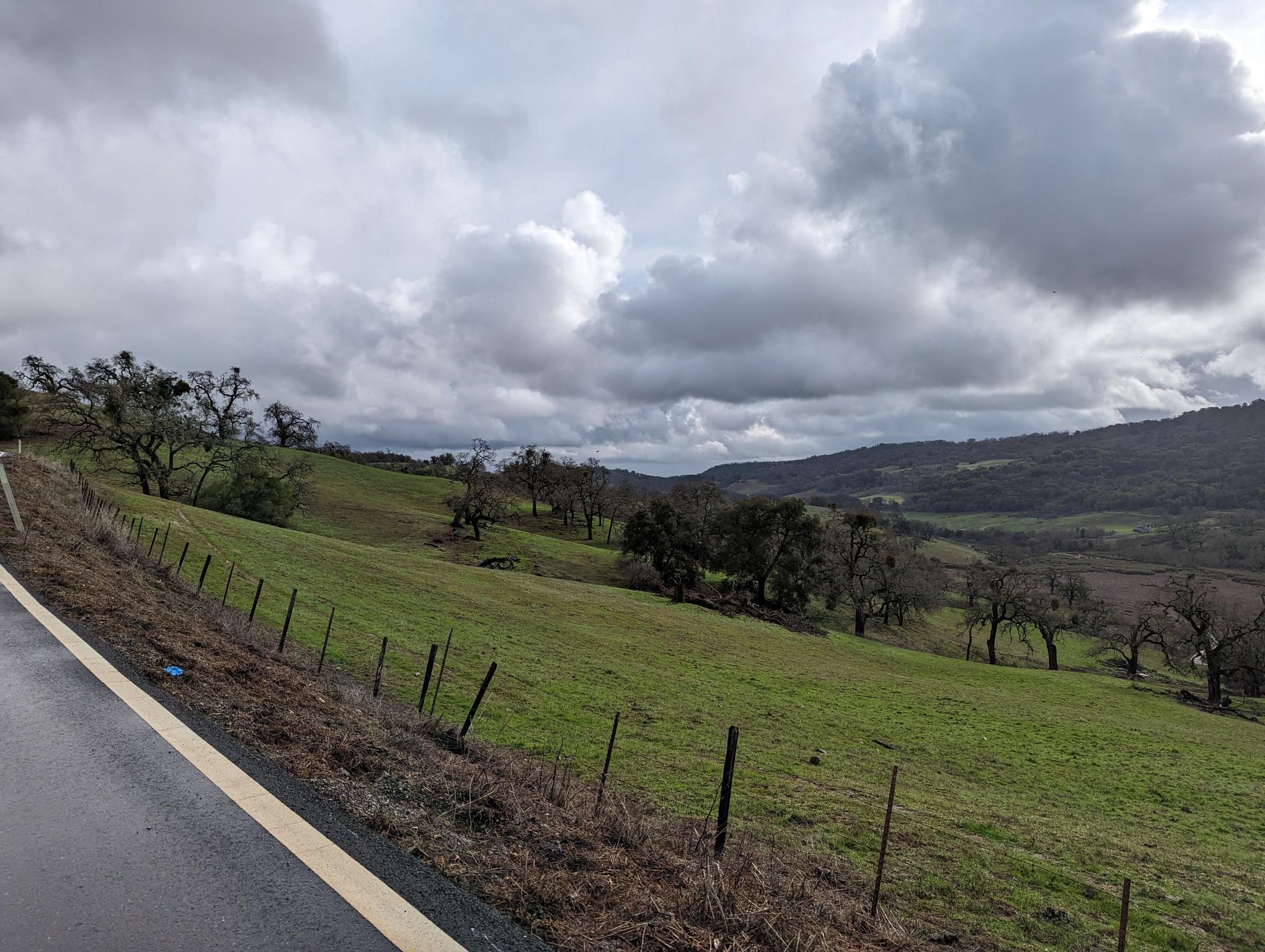
The next few miles were some of the best cycling I’d ever experienced. The air was crisp, the tarmac was buttery smooth, there were relatively few cars (maybe 1 every 3 minutes), and the views were breathtaking. Everything felt raw - like one’d experience in a tundra. A few miles after that, I heard a very loud squawk, and saw a bald eagle looking at me! At least I think it was a bald eagle - it was quite large and its chest poofed out comically. Didn’t know I was a threat to win Mrs. Eagle’s heart.
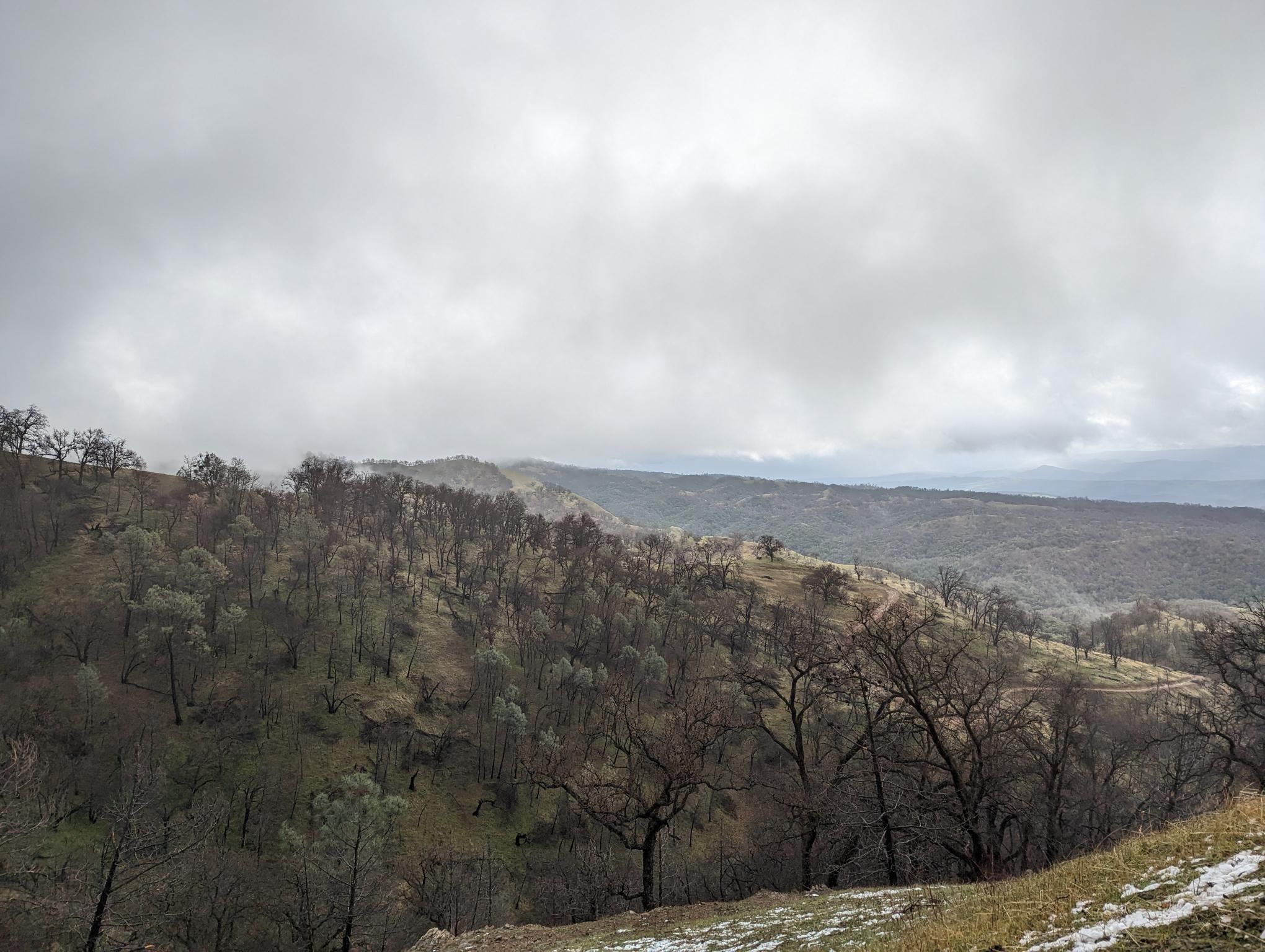
At about mile 11, I started seeing snow, and I was riding into the clouds, so visibility was decreasing. The air still felt refreshing, but more dense. By then, I was just a ball of mud. The road was moderately clean from gravel, but there was quite a bit of muddy water flowing over it, which my tires splattered all over me. My fingers, especially my index and middle fingers, had also gotten quite cold. It was somehow 37 degrees, well below what I was expecting. But I wasn’t really too worried, as I’d ridden in such temperatures before, and as long as the road didn’t turn to black ice, I wasn’t worried about my safety. And my experience suggests that the highest temperature black ice could form at on somewhat-traveled roads was 28 degrees. So I was still good.
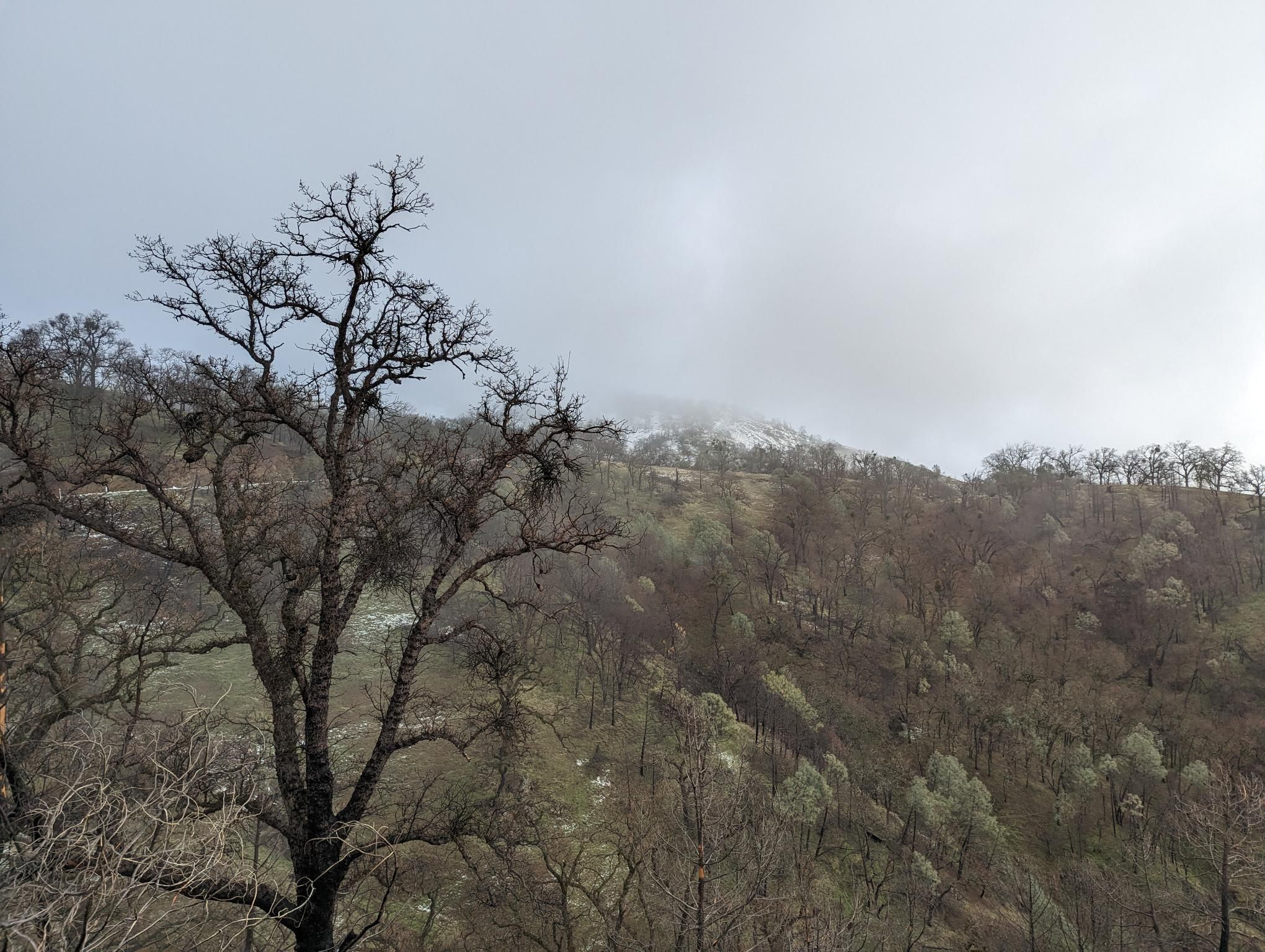
At mile 14, I really started pondering my existence. The temperature had dropped to 34 degrees, and the wind was starting to pick up, making it feel much colder. At this point, I zipped my jacket up fully. The backs of my fingers had gotten really cold, but I still had feeling in them, so it was ok.

At mile 15, it got really rough. Temperature was now 32 degrees, I was fully exposed from the wind blowing from the Northwest, and it had started sleeting lightly. I was starting to get quite cold - not just the fingers, but also the torso. Curiously, I didn’t have to blow my nose.
At about 15.7 miles, I seriously considered turning around. It was 30 degrees. I wasn’t worried about the road freezing, but the layer of slush on the road that wasn’t scraped away by the snow plows was starting to impede my progress a bit. I was forced to weave around the piles of slush. And then suddenly, at exactly mile 16, I arrived at Lick Observatory. I wasn’t exactly sure whether that was the top, and did see a walking path going up a small hill, but I wasn’t about to spend any more time up there. After wolfing down a bar, and observing a woman put Ziploc bags of snow into her car’s hatch, I was ready to start heading down. But not before the woman hit me with a, “That’s quite a feat there you’ve got on your hands.” That’s always nice to hear :)
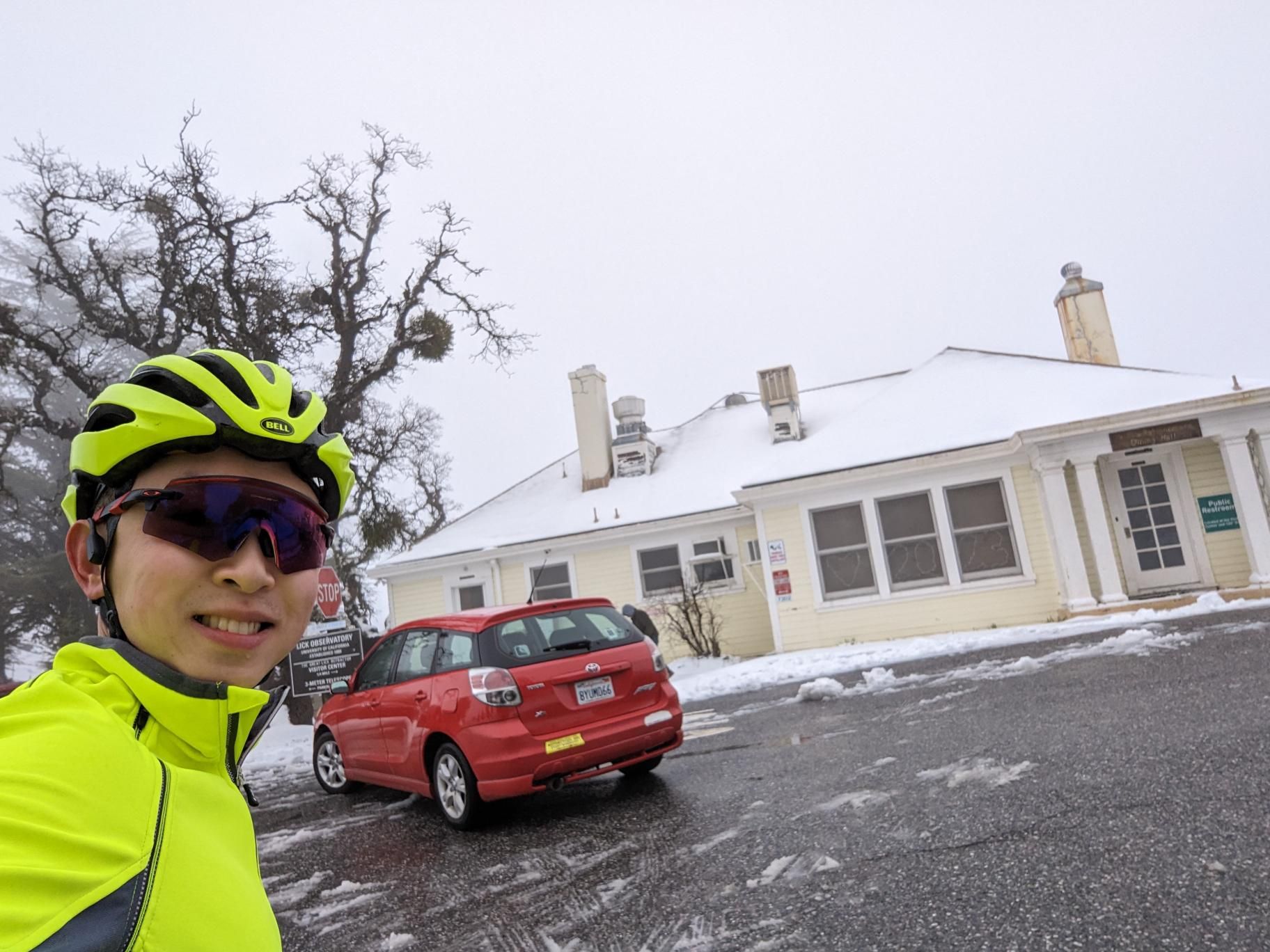
Until that point, the ride wasn’t anything particularly obnoxious by my standards. Sure, it was cold and sleeting, but the overall road condition was still good, and I wasn’t actively shivering. It had been a quite nice ride so far.
The next 10 miles were the most miserable 10 miles I’ve ever ridden in my life. As soon as I started descending, I felt a coldness that recalibrated my understanding of freezing. It was 30 degrees, but I was going at 20mph, against wind, and it was still sleeting. Within seconds, it felt like I had lost control of my fingers’ ability to brake. I could no longer move just one finger. It took all of my motor control ability to move all four fingers in unison to grasp the brake levers. I was starting to get worried about frostbite. Images of necrotic fingers experienced by Mt. Everest climbers crossed my mind more than once. I figured that as long as my tissue didn’t actually freeze, I’d be ok. So, I resolved to try to move the fingers as much as possible and keep the blood flow going, even though it was horribly painful. I could only go one miles, to mile 17 before I had to stop. I stuffed both my hands under my jersey onto my belly and just stood there for a few minutes. I was starting to dread how long it would take to warm the fingers enough for me to be able to use them and not feel too much pain, but it ended up only taking perhaps two minutes. And I was back on my bike again. And I could again last only a mile, before stopping again at mile 18. This time, the warming took longer, and my core had started getting cold, perhaps because of my hands robbing my body of all its warmth. And then again at mile 19. My stop at mile 19 was a little different. It felt like my fingers were no longer reacting to warming up. Perhaps my belly had also gotten too cold. Mile 19 ended up being a quite lengthy stop.
Between mile 19 and mile 20, I was starting to really get worried. I only had about 35 minutes until sunset and still had two one mile climbs to do. It wasn’t that I was worried about the dark - I had both front and rear lights that could powerfully illuminate everything. But my body temperature drop and the treacherous road conditions were quite concerning. By mile 20, it hadn’t warmed up much. It was 32 degrees, and I was thinking about contingencies. There was still quite a bit of vehicle traffic, so worst case, I could flag down a driver and they would probably act as good Samaritans and take me down the mountain. But I was cold. And so, I pulled out a trick that I’d only ever heard about. I don’t know if I first heard about it watching Deadliest Catch at somebody else’s house or if it was a friend who joked about it, but it was said that peeing on your hand could warm it up. So, with a lack of more compelling options to warm up my hands, I tried this at my mile 20 stop. I had been continuously downing water, and had accumulated a reservoir of piping hot pee. The warm stream of pee hitting the freezing cold fingers was excruciating. It felt like my fingers were being being stabbed by a million hot pins. And so, for the next minute, I suffered, knowing that this would probably warm up my fingers a lot.
And it worked! My fingers had warmed up quite a bit. And with the rain starting up again, any evidence of my deed was quickly washed away as I zoomed down the mountain with renewed energy.
At mile 21, I would face my next trial. It suddenly started hailing - marble-sized balls of ice suddenly started clapping me - a cacophony of thuds hitting my helmet and my soft thighs. I looked around, but there was nowhere to hide. Trees were few and too far away from the road to be useful. And there were no cars nearby - themselves likely stopped on the road to wait out the hailstorm. And so, I slowed down and just tried to keep myself from yelping every time a marble of hail splattered down on me. The hailstorm lasted perhaps three or five minutes. At which point, I was facing another problem - there was now a one-inch thick layer of hail on the road. Fortunately, it turned out that as long as I biked through the hail slowly, it would part for my tires, which continuously made contact with the tarmac.
At mile 22, I was back at the first of the two one-mile climbs I would have to make. My heart rate was down to 120 and my legs had essentially been unused since I peaked, by this point over 30 minutes in the past. But I was rather excited, as I was hoping that the climb would bring my heart rate up and warm me up. Plus, climbs are slow, at less than 10mph, so there’d be less wind chill.
I ended up being right about warming me up, but I did not anticipate the most horrible cramping in the legs. I rarely cramped, so this was a quite novel feeling. With every pedal stroke, both the quads and the calves on both legs would cramp, and I was fearful that they would twitch uncontrollably in a way such that I would lose control of the bike. It felt like I was riding a bike with jelly-filled vibrating drumsticks as legs. It was horribly painful.
Thankfully, the climb only took about seven minutes, after which there was a long descent to the entrance of Joseph D. Grant County Park, which was also the start of the Quimby Road climb. Those three miles redefined pain. It was now a little warmer, at 36 degrees, but I was starting to shiver uncontrollably on the bike, and becoming worried that I would lose control and crash. These three miles were very exposed, and the wind chill took my breath away - literally. Plus, it was raining again. And so, I thought of contingency plans - the park attendant at Joseph D. Grant County Park seemed quite friendly, so I resolved to see if he would let me stay in his hut and warm myself up a bit. I remembered on the way up seeing the close time being 5:30pm, so I still had some time.
He ended up still being there. And so, I sauntered up (as much as somebody on a bike could saunter), and asked if I could cohabitate with him for a few minutes and get warmed up. He replied in the negative, saying it was park policy that no guests be allowed in the huts. But he must have seen that I was shivering uncontrollably and did bring a heat fan to the door and let me stand in front of the heat fan. It helped, but being outside at 36 degrees still wasn’t ideal, so eventually he said fk it and just let me in. He must have seen that my shivering wasn’t improving and changed his mind. Note to park administrators - if anybody picks a problem with the main man for letting me in the hut, I will find you, and I will make your life miserable. He did the right thing.
After a few minutes of sitting in front of the heat fan, the shivering actually devolved into outright shaking. After another few minutes, the shaking turned back into shivering, and finally, the shivering went away. The attendant and I started chatting a bit and I got to know that he had recently taken up this position and it was quite the thing. Great hours, wonderful views of nature, and relatively few visitors. He also told me his name, which will be withheld for the sake of his privacy. And there was even wifi in the hut. He also ended up making me a cup of hot water, which seemed to really help heat me up. A few minutes later, it was pitch black outside, and it was starting to become obvious that I would not be able to make my way down Quimby Road in my current state. The main man volunteered to take me down to my car after the shift, but I felt like he had already done a lot, so called up Ellen, who I thought was likely home dogsitting. Most everybody else was still up in Tahoe. Begged Ellen, and she immediately said, “Bet, ETA 40 minutes.” I was saved.
After some more chatting with the main man, Ellen arrived. And back down Quimby Road we went. The road conditions during our descent felt even more treacherous than when I was ascending. It literally felt like we were going to fly off the side of the mountain at times. But Ellen is a great driver and we made it down safety.
As we arrived at my parked car near the high school, a wave of relief finally washed over me. My ordeal was over. I probably wasn’t going to feel great tomorrow, but that’s tomorrow problem. All that mattered was that I had survived. All thanks to two people.
